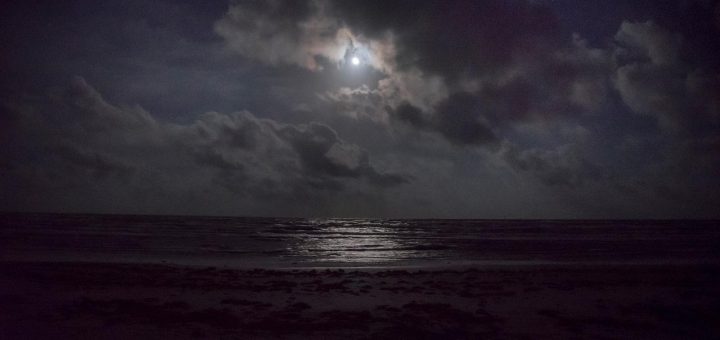Things I mean to know

Understanding how the moon controls the tides
By Sabrina Harmata, Staff Writer
Things I mean to know is a bi-monthly column detailing a topic the writer believes to be true, but does not understand how it works. This column is inspired by the episode “Things I Mean to Know” from the podcast This American Life.
I remember learning about the connection between the moon and the tides in school when I was younger. At this point in my life, I was living in southern California, about twenty minutes away from the beach. Because of this, frequent trips to the beach were quite common and I was able to witness the rising and lowering of the tides first-hand.
Therefore, I was aware of it happening. I just wasn’t sure how it worked. In fact, I never really thought about the science behind it at all. I just took the link between the two for granted since I had been taught it as fact. All I knew is it had something to do with gravity.
But now I’m beginning to question it more. It sounds crazy, doesn’t it, that the moon can affect our large bodies of water from over 350,000 kilometers away? How wild is that? It still baffles me to think about it. Contemplating this wondrous scientific truth led me to a million different questions: How exactly does the moon control the tides? Do the different phases of the moon have different effects? How does the moon create high tides or low tides? And what would happen if the moon didn’t have this influence over the tides?
It should be noted that as an English major, I am not scientifically savvy. My specialty is manipulating and analyzing the complexities of language, not understanding the deep mysteries of the universe. Nevertheless, this did not stop me from trying to figure out what is going on.
Naturally, to find answers, I turned to the one person in my life who knows everything — well, almost everything: my dad. All he could tell me is what I already knew. The influence the moon has over the tides has to do with the gravitational pull between the moon and the earth. At this point, I was beginning to get discouraged. If my dad, the one person who I always counted on to know things, couldn’t explain this to me, then who could?
So, I turned to the Internet. If there was one place where I could find all the answers I was looking for, I was sure that would be it. A quick Google search revealed that there are two low tides, and two high tides a day, each controlled by the positioning of the moon in relation to the body of water.
Apparently, when the moon is directly in line with the coast, either on the same side of the planet or the opposite side, this creates a high tide, as the water is being pulled towards the moon. This means low tides occur when the moon is on the opposite side of the earth from the body of water it is affecting.
As I kept researching I found that the different phases of the moon do, in fact, have an effect on how it controls the tides. According to the website hiwaay.net, the full moon exaggerates the influence it has on the tides. In other words, the full moon creates extremely high, high tides, and very low, low tides. To be honest, I still have no idea how the full moon emphasizes this effect. I just know it does happen. Clearly, the moon is much more puzzling than I originally thought. I guess I’ll never fully understand it’s mysteries.




